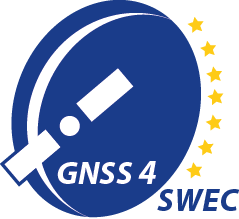Speaker
Dr
Anna Klos
(Military University of Technology, Warsaw, Poland)
Description
Within last 26 years, the Zenith Total Delay (ZTD) or Integrated Water Vapour (IWV) time series have been estimated together with position series during processing or reprocessing of GNSS data. The basic advantage of ZTD and IWV time series analysis is a possible application to monitoring of climate changes. In this kind of studies, trend and its uncertainty indicating a significance are widely interpreted. In our research we model trend, significant seasonal signals and noise properties with Least-Squares Estimation (LSE) and Maximum likelihood Estimation (MLE) for the common data set of daily IWV time series provided by COST ES1206 homogenisation group. We show, that the amplitudes of annual signal are around 20 mm with maxima in summer. The maxima of semi-annual oscillations fall in January and March and are well-correlated for Northern Hemisphere. A detailed analysis of noise properties lead us to decide on the proper noise model that should be used when the uncertainties of seasonal signals and trend are estimated. We examined different processes: from white through power-law ending on autoregressive. We estimated that when the autoregressive process is taken into consideration, the uncertainties of trend are larger of few times when being compared to white noise assumption. The autoregressive model is optimal for IWV data, since it describes the flattening of Power Spectral Densities in low and high frequencies. Moreover, the results of daily IWV analysis were summarized with results of hourly ZTD series that were estimated in a second reprocessing undertaken by University of Luxembourg as part of its activities as an International GNSS Service (IGS) Tide Gauge Benchmark Monitoring (TIGA) analysis centre.
Primary author
Dr
Anna Klos
(Military University of Technology, Warsaw, Poland)
Co-authors
Dr
Addisu Hunegnaw
(University of Luxembourg, Luxembourg)
Prof.
Felix Norman Teferle
(University of Luxembourg, Luxembourg)
Dr
Furqan Ahmed
(1) University of Luxembourg, Luxembourg, 2) IGN France)
Dr
Janusz Bogusz
(Military University of Technology, Warsaw, Poland)

